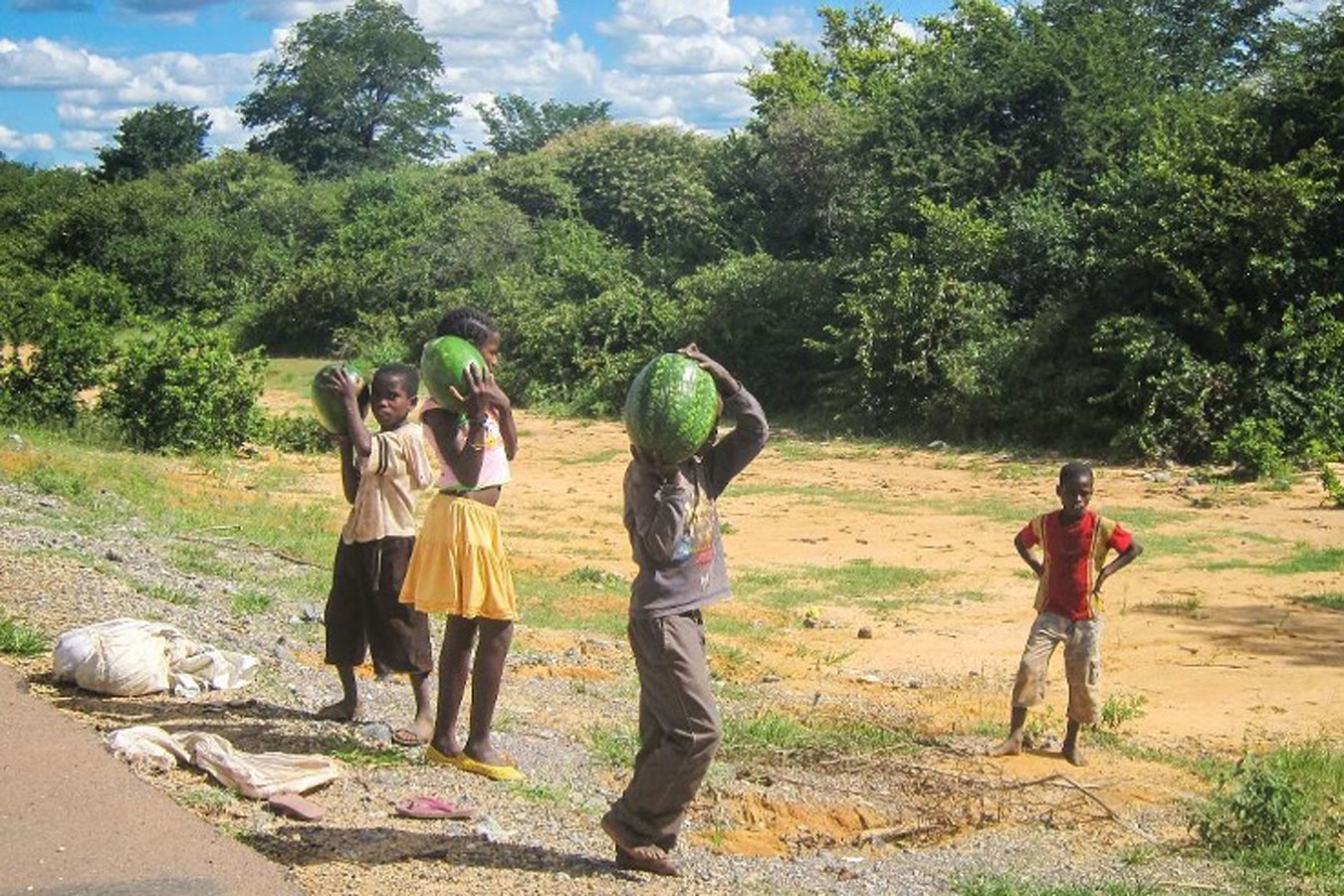Droughts hit smallholder crop farmers and pastoralists hard, and climate change is translating into less predictable weather. But Dr. Busani Moyo, acting dean of natural resources management at Zimbabwe’s Gwanda State University, argues that he’s located the ideal climate insurance crop for dryland farming and ranching: cow melons.
What exactly are those? And how can such an oddly-named fruit help improve food security and smallholder farmers’ livelihoods? In an interview with Grow Further, Moyo explained why he’s convinced this somewhat overlooked crop holds so much potential for building better resilience to climate change in small-scale farming.
What’s in a name?
Dr. Moyo and his team were among 20 finalist candidates competing for Grow Further’s first grants issued to support innovations in smallholder agriculture. He kindly took time from his busy schedule to answer our questions and to help clear things up for us. For starters, we wanted to know why most of us had never even heard of cow melons. As Moyo explained, we actually have, only most people in the West know this fruit by a different and far more common name: watermelons.
Cow melons are a type of watermelon, though not as sweet as those typically eaten as fruit. “They come in various sizes, shapes, and colors,” Moyo explained. Whatever you call them, Moyo said cow melons are valued by many pastoralists for their utility as alternative livestock feed, especially for cattle—hence his preferred name for this fruit, the cow melon.
As Moyo explained to us, his lab’s research seeks to figure out how to best yield this fruit to help agricultural communities throughout Zimbabwe better adapt to climate change. This answer only invited more questions from us. The name alone suggests watermelons are an odd choice of fruit or crop to plant in dry periods. However, Moyo insists that this fruit holds real climate adaptation potential.
“Cow melons’ growth habits are like sweet melons, and tend to be productive during drought periods,” Moyo added. “The focus [of our investigation] was on cow melons because there is limited research that has been done on the crop, while the crop is drought tolerant.” Cow melons are also remarkably resilient to the elements, he added. “Cow melon fruits have a longer shelf life than sweet watermelons and can be stored for many months under shade.”
Planning a cow melon revolution
Dr. Moyo’s team has a clear plan for investigating the potentially transformative impact of watermelons on smallholder farming.
Their first aim is to better understand the nutritional value of Citrullus lanatus. They have plans to research ways to improve the overall productivity of cow melon cultivation, seeking to determine a set of best agronomic practices that can be shared with smallholder farmers.
Moyo told Grow Further that he also wants to explore other ways of eating watermelons. Most of us would simply cut one up and eat it that way, but he told us that one key to making cow melon cultivation more popular with smallholder farmers and the communities they serve is to discover a variety of different ways for consumers to enjoy this fruit.
“Different communities tend to have one or two dishes which may differ,” Moyo explained. “Their nutritional value may not be known. Other communities are not aware of the dishes that can be made from cow melons.” His research also involves investigating which watermelon varieties might work best in the farming regions where they are hoping to help this crop take off. “Traits being looked for are productivity, fruit size, palatability, and longevity of the fruit,” Moyo explained. “Some of the traits are going to be developed as per the requirement by the consumer.”
Not just for people
Beyond direct human consumption, Moyo expressed a particular desire to investigate how watermelons can be grown to feed cattle during dry periods.
“The pulp can be fed to animals,” Moyo said. He’s also exploring ways to best store watermelons in case rains fail and then how to best process these fruits as supplemental forage for livestock. The idea is to have the melons ready for when pastures dry up and leave little natural vegetation for the animals to sustain themselves on. For instance, Moyo’s team has an idea to develop a type of “seed cake” to feed cattle in Zimbabwe. This research focuses on the entire fruit—Moyo and his partners say they want to help farmers and pastoralists use the whole cow melon.
For example, Moyo and his team also say they want to find out whether watermelon seed oil holds any nutritional or medicinal benefits. In addition, they plan to investigate the chemical composition of watermelon rinds, to see what might be made from them. Finally, they plan to sort out how best to market this fruit and encourage communities, both agricultural and pastoral, to grow more of it.
Watermelons are about more than picnics–to farmers in Zimbabwe, they represent a way to maintain and improve livelihoods in a changing climate. To Dr. Moyo, they represent a little-studied high-potential approach to improving food security. And that’s the type of thing that gets us excited at Grow Further.
“Traits being looked for are productivity, fruit size, palatability, and longevity of the fruit.”
— Grow Further
Photo credit: Children carrying watermelons in Angola. JB Dodane, Creative Commons 2.0 Generic (CC BY-NC 2.0).




